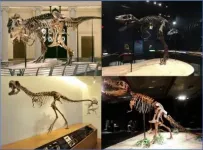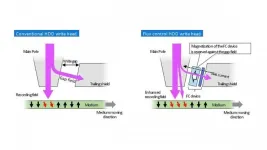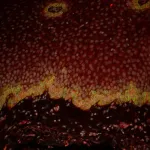(Press-News.org) CHAPEL HILL, NC -- A comprehensive review by University of North Carolina researchers and colleagues of hundreds of publications, incorporating more than two dozen articles on prevention screening for lung cancer with low-dose spiral computed tomography (LDCT), shows there are both benefits and harms from screening. The review is published in JAMA on March 9, 2021.
The results of the decadelong National Lung Screening Trial (NLST) showed that LDCT could detect lung cancer better than conventional X-rays in current or previous heavy smokers. Based on those results, the United States Preventive Services Task Force (USPSTF) initially recommended low-dose CT screening for people ages 55 to 80 with a 30 pack-year smoking history. Subsequently, other screening trial results have been published, including a European trial called NELSON, the next-largest study to the NLST. NELSON also found a reduction in deaths due to lung cancer because of screening.
It has been nearly a decade since the initial recommendations were formulated, so the USPSTF initiated an updated review of the evidence. UNC scientists and their collaborators evaluated and synthesized data from the seven trials to arrive at a comprehensive, current assessment of harms and benefits of screening.
New recommendations, based on this evidence review, broaden the criteria for screening eligibility by lowering the screening age from 55 to 50 and reducing the pack-year requirement from 30 to 20 pack-years. There were several reasons for this change in eligibility according to the reviewers; one was to promote health equity, in part because African Americans have higher lung cancer risk even with lower levels of smoking exposure.
"Two large studies have now confirmed that screening can lower the chance of dying of lung cancer in high-risk people. However, people considering screening should know that a relatively small number of people who are screened benefit, and that screening can also lead to real harms," said Daniel Reuland, MD, MPH, one of the review authors, a member of the UNC Lineberger Comprehensive Cancer Center, and a professor in the division of General Medicine and Clinical Epidemiology at UNC School of Medicine.
In screening with CT scans, doctors are looking for lung spots or nodules that might represent early lung cancer. Harms from screening can come from the fact that the large majority of the nodules found on screening are not cancer. These findings are known as false positives, and patients with these results usually require additional scans to see if the spots are growing over time. In some cases, these false positives lead to unnecessary surgery and procedures. Throughout the process, patients may experience the mental distress of a possible cancer diagnosis.
"Applying screening tests to a population without symptoms of disease can certainly benefit some people but also has the potential for some harms," said lead author Daniel Jonas, MD, MPH, who conducted most of this research while he was a professor at the UNC School of Medicine and now is director of the division of general internal medicine at Ohio State University. "In the case of lung cancer screening, we now have more certainty that some individuals will benefit, with some lung cancer deaths prevented, and we also know others will be harmed. The USPSTF has weighed the overall benefits and harms, and on balance, based on our review and from modeling studies, has determined that screening with LDCT has an overall net benefit for high-risk people ages 50 to 80."
Reuland and Jonas note that, encouragingly, lung cancer rates are declining, reflecting changing smoking patterns in recent decades. Therefore, the population eligible for screening is also projected to decline. At this point, however, they don't foresee these trends changing screening recommendations during the next decade or so.
"Different trials have used different screening approaches, and we still do not know how often screening should be done or which approach to categorizing lesions is best for reducing the harms, costs and burdens of screening while retaining the benefits," said Reuland, who is also a research fellow at UNC's Cecil G. Sheps Center for Health Services Research. "I would prioritize this as an important area of future research, as it could likely be addressed by implementing less expensive studies or using approaches other than those used in the large trials we just reviewed."
INFORMATION:
In addition to Reuland and Jonas, the other authors are Shivani M. Reddy, MD, MSc, RTI International-UNC Evidence-based Practice Center; Max Nagle, MD, MPH, University of Michigan; Stephen D. Clark, MD, MPH, Virginia Commonwealth University; Chineme Enyioha, MD, MPH, UNC School of Medicine; Teri L. Malo, PhD, MPH, and Alison T. Brenner, PhD, MPH, UNC Lineberger; Rachel Palmieri Weber, PhD, Charli Armstrong, BA, Manny Coker-Schwimmer, MPH, Jennifer Cook Middleton, PhD, and Christiane Voisin, MSLS, RTI International-UNC Evidence-based Practice Center and UNC Cecil G. Sheps Center for Health Services Research; Russell P. Harris, MD, MPH, UNC School of Medicine and the UNC Cecil G. Sheps Center for Health Services Research.
WASHINGTON, March 9, 2021 -- The University of Minnesota School of Music was concerned about one-on-one teaching during the COVID-19 pandemic and wondered if it should supplement its ventilation system with portable HEPA air purifiers.
So, school officials reached out to Suo Yang, a professor within the College of Science and Engineering, and his team to figure it out. In Physics of Fluids, from AIP Publishing, Yang and the researchers describe their work to predict how virus particles spread within a music classroom.
"The airborne transmission of COVID-19 through ...
By closely examining the jaw mechanics of juvenile and adult tyrannosaurids, some of the fiercest dinosaurs to inhabit earth, scientists led by the University of Bristol have uncovered differences in how they bit into their prey.
They found that younger tyrannosaurs were incapable of delivering the bone-crunching bite that is often synonymous with the Tyrannosaurus Rex and that adult specimens were far better equipped for tearing out chunks of flesh and bone with their massive, deeply set jaws.
The team also found that tension from the insertion of the lower pterygoid muscle is linked to decreasing stresses near the front of the typical tyrannosaur jaw, where the animals may have applied their highest impact bite ...
WASHINGTON, March 9, 2021 -- One of the primary ways the COVID-19 virus is transmitted is via airborne diffusion of saliva microdroplets, so it is paramount to find methods to kill the virus in airborne microdroplets.
The extreme confusion that abounded at the beginning of the pandemic about safe social distances, mask wearing, and social behavior inspired Marche Polytechnic University researchers, who happen to be intrigued by saliva droplet diffusion, to search for answers and ways to help.
In Physics of Fluids, from AIP Publishing, Valerio D'Alessandro and colleagues describe using a supercomputer to do numerical modeling ...
(COLUMBUS, Ohio) - To minimize transmission of COVID-19, in spring 2020, most U.S. states passed policies promoting social distancing through stay-at-home orders prohibiting non-essential travel. Vehicle-miles traveled in the U.S. decreased by 41% in April 2020 compared to 2019. A new study led by researchers at the Center for Injury Research and Policy at Nationwide Children's Hospital estimated associations between COVID-19-related social-distancing policies, traffic volume, and motor vehicle crash-related outcomes in Ohio.
The study, published today in JAMA, found the number of individuals involved in a motor vehicle crash, sustaining injury, sustaining ...
WASHINGTON, March 9, 2021 -- Researchers at Toshiba Corporation in Japan have studied the operation of a small device fabricated in the write gap of a hard disk drive's write head to extend its recording density. The device, developed by HWY Technologies, is based on a design concept known as microwave-assisted magnetic recording, or MAMR.
This technology, reported in the Journal of Applied Physics, by AIP Publishing, uses a microwave field generator known as a spin-torque oscillator. The spin-torque oscillator emits a microwave field causing the magnetic particles of the recording medium to wobble the way a spinning top does. This makes them much easier to flip over when the write head applies a recording magnetic ...
People over 65 shouldn't take three or more medicines that act on their brain and nervous system, experts strongly warn, because the drugs can interact and raise the risk of everything from falls to overdoses to memory issues.
But a new study finds that 1 in 7 people with dementia who live outside nursing homes are taking at least three of these drugs.
Even if they received the drugs to calm some of dementia's more troubling behavioral issues, the researchers say, taking them in combination could accelerate their loss of memory and thinking ability, and raise their chance of ...
PITTSBURGH, 9 March 2021 - If approved, the monthly dapivirine vaginal ring would be the first biomedical HIV prevention method designed specifically for cisgender women, as well as the first long-acting method. Looking to the future, researchers from the National Institutes of Health-funded END ...
Researchers from the group of Hans Clevers identified and characterized rare cell types in the upper gastrointestinal tract. Using single cell RNA sequencing, they studied the cellular composition of the esophagus, stomach and upper part of the small intestine. They provide detailed gene expression analyses for all epithelial cells in these organs. Furthermore, they identified a rare cell type that is most likely responsible for the secretion of high volumes of water in humans. This cell type provides a link to gastrointestinal defects in patients with cystic fibrosis. The paper was published in Cell Reports on the 9th ...
What The Study Did: Researchers compared traffic volume and motor vehicle crash injuries before, during and after COVID-19-related state-of-emergency and stay-at-home orders in Ohio from January to July last year with the same period in 2019.
Authors: Motao Zhu, Ph.D., of the Abigail Wexner Research Institute at Nationwide Children's Hospital in Columbus, Ohio, is the corresponding author.
To access the embargoed study: Visit our For The Media website at this link https://media.jamanetwork.com/
(doi:10.1001/jama.2020.25770)
Editor's Note: The article includes conflicts of interest and funding/support disclosures. Please see the article ...
Bioengineers at the University of California San Diego and San Diego State University have discovered a key feature that allows cancer cells to break from typical cell behavior and migrate away from the stiffer tissue in a tumor, shedding light on the process of metastasis and offering possible new targets for cancer therapies.
It has been well documented that cells typically migrate away from softer tissue to stiffer regions within the extracellular matrix-- a process called durotaxis. Metastatic cancer cells are the rare exception to this rule, moving away from the stiffer tumor tissue to softer tissue, and spreading ...




